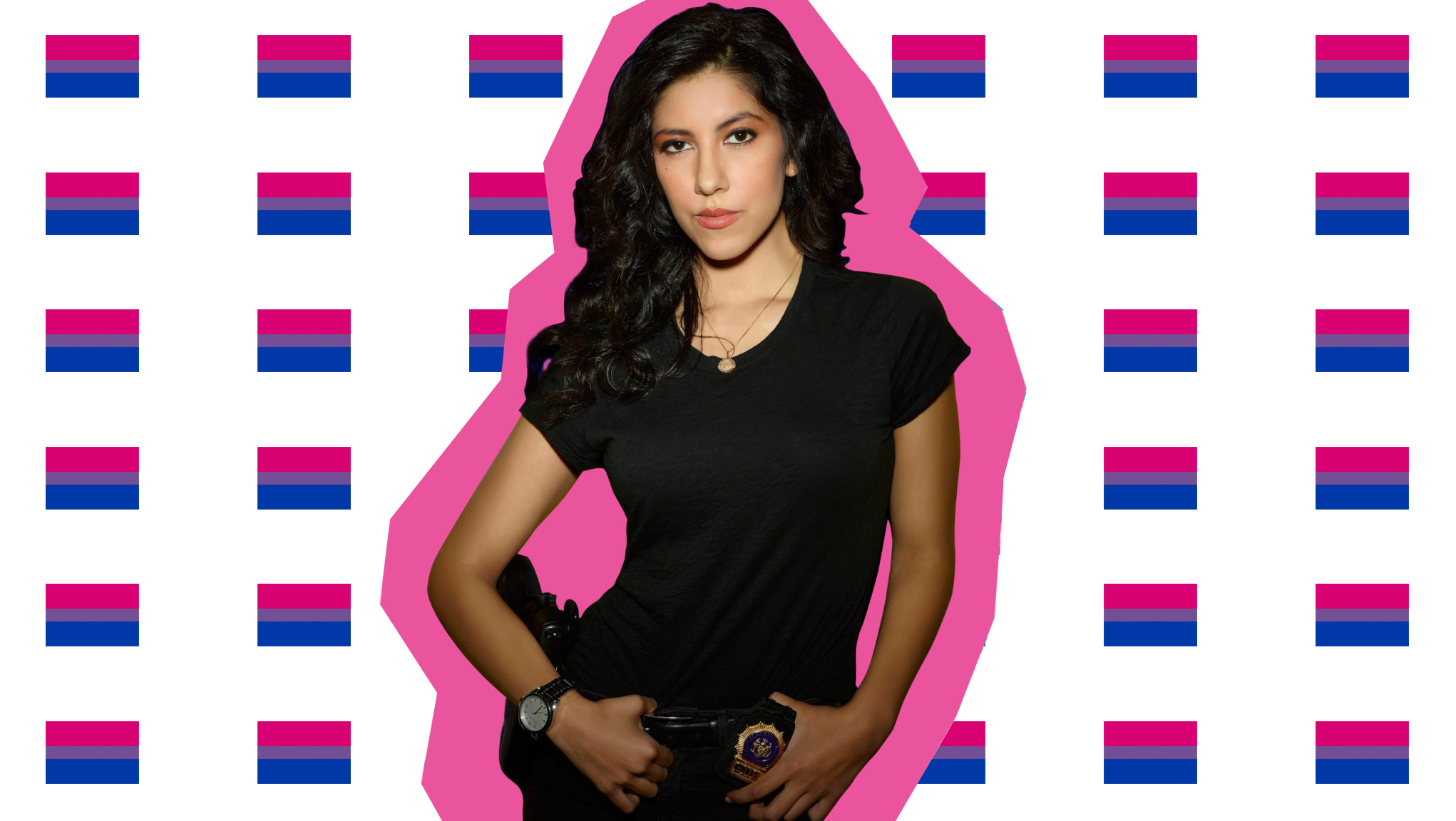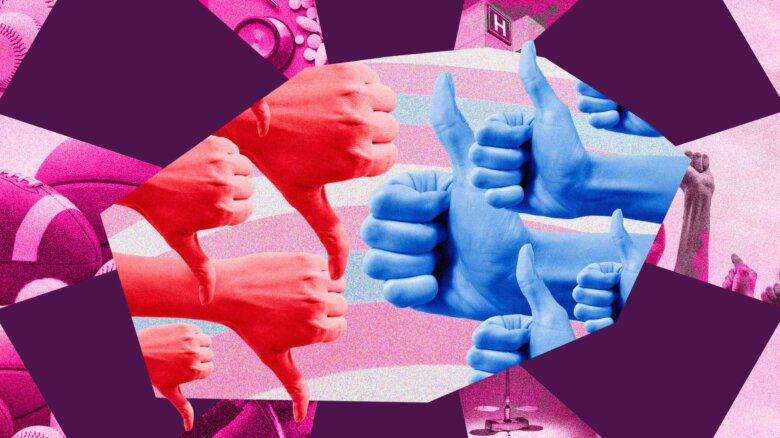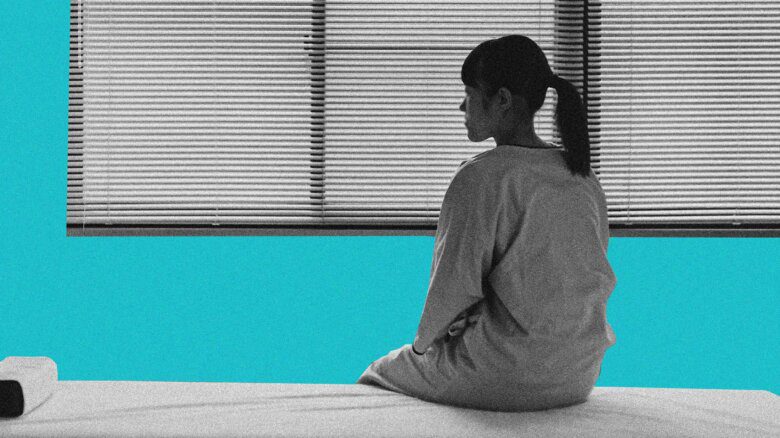When I decided to binge-watch Brooklyn Nine-Nine this summer, Rosa Diaz quickly became my favourite character.
Diaz is a leather jacket–wearing, motorcycle-driving badass woman. She’s tough, smart and unapologetic. She never hesitates to break things around the office, make fun of her coworkers or even threaten them if they ask about her personal life. With her attitude and her permanent scowl, Diaz is downright intimidating. She’s one of the strongest female characters I’ve ever seen. Nobody dares cross her, and I love it.
It was hilarious and heartwarming to watch her character grow throughout the seasons, even embracing her softer side when she began dating Adrian Pimento in Season 3. When she came out as bisexual to the rest of the characters in Season 5, Episode 10, I was surprised how naturally it came up — and I can’t help but compare her coming-out to my own.
In Grade 1, I had a crush on a sweet boy with cloudy-coloured eyes named Tyler.
I loved watching him run in gym class. I dreamed of seeing him run with natural athleticism if he ever asked me to play tag outside of school.
When I moved to a new house on the other side of the city, I changed elementary schools and I forgot about Tyler and met a girl named Clark.
Clark was smart, creative and open-minded, which always made our time together new and exciting. At first, I thought I was looking forward to the games we played, but I quickly came to realize I was looking forward to spending time with her.
We were neighbours, and we would spend hours playing with Bratz dolls together. One day, Clark suggested we make the two dolls date.
“But isn’t Jade dating Dylan?” I asked, wondering how Jade could possibly have feelings for a girl after she fell in love with Dylan.
“They’re breaking up,” said Clark, matter-of-factly. “Jade and Sasha are in love now.”
There was something about the way Clark approached the queer relationship with ease that made me feel comfortable. The closer Clark and I got, the more I wanted to see her. We would spend hours playing with dolls, watching movies and holding hands. I was young and naïve, and I didn’t understand what I felt. But I knew Clark was magical.
After Clark told me that Jade and Sasha could be together simply because they’re in love, I realized that relationships didn’t have to be defined by gender. I enjoyed making Jade date Sasha, or Dylan date Chad, because it helped me understand queerness. In our imagined love rectangle, Jade, Sasha, Dylan and Chad all ended up dating each other at different times.
In the back of my mind, I knew that if I dated Clark, that would be alright too.
The first time I heard the word bisexual was long after I already knew about people who identified as gay or lesbian. It was almost the end of Grade 2, about six months after we moved and I started spending all of my time with Clark. My dad was driving me to school, and “Bohemian Rhapsody” played through the car radio and my dad told me about Queen and Freddie Mercury.
“Anyway, Freddie Mercury was just gay,” he said. “Bisexuality isn’t a real thing.”
I didn’t bother asking him to explain what bisexuality was judging from his tone. But it was this comment that led me on a complicated journey of discovering my sexuality.
For years, my crushes would alternate between men and women. Knowing very little about private browsing and deleting a computer’s search history, I didn’t dare to venture onto the internet to understand it. Instead, I asked Clark about bisexuality.
Our dolls were already well into the love rectangle after I heard what my dad said in the car and because I thought Clark was the smartest person on the planet, I knew she’d be able to explain it to me.
She told me that our dolls were bisexual, because they liked both boys and girls. I always knew I wasn’t a lesbian because I did really like Tyler, but my feelings for Clark didn’t make me straight either. I wouldn’t officially come out for years, but it was that moment that Clark helped me make sense of my identity.
But in the back of my mind, I always remembered what my father said about Freddie Mercury.
Growing up, bisexual representation on TV was limited, and even when it was mentioned, writers tended to use it for comedic value. I remember watching reruns of Friends as a kid and in Episode 12 of Season 2, Phoebe was performing in the show’s coffee house, Central Perk, as she usually does. As the rest of the characters watched, Phoebe sang: “Sometimes men love women, and sometimes men love men, and then there are bisexuals, though some just say they’re kidding themselves.” Cue the laugh track.
I also remember when the token bisexual character Alice Pieszecki on The L Word came out as lesbian later in the show saying to another character, “You were right about bisexuality. It’s gross.” From an early age, the word “bisexual” was tainted. The media made me feel like my bisexuality was laughable and ingenuine.
Was my sexuality just a joke? Was I really just going through a phase?
According to a recent report by GLAAD Media Institute, of the 8.8 percent of LGBTQ2 characters on primetime scripted broadcast series, 27 percent of those characters are bisexual. Within the LGBTQ2 community about 40 percent of folks identify as bisexuals. Bisexuals are underrepresented in media, and when they are represented, it’s done poorly.
In Season 3 Episode 4 of Sex and the City, there is a scene in which the characters talked about bisexuality as if they were debunking a conspiracy theory. Carrie Bradshaw says “I did the ‘date the bisexual guy’ thing in college, but in the end they all ended up with men.”
The other characters agreed and Samantha Jones chimes in that bisexual girls are like that too. Afterwards, Bradshaw says “I’m not even sure bisexuality exists, I think it’s just this layover on the way to gay town.”
The media’s portrayal made it seem like bisexuals were promiscuous, lying about their sexuality or just experimenting. I couldn’t believe popular shows like Friends and Sex and the City, much less a queer show like The L Word, were making a joke out of bisexuality.
I came out to my friends when I was 17. Shortly after, I got into a relationship with a man. Although nobody ever said anything to me about it, I was ashamed because I felt like I fit into the stereotype about bisexual women — that they’re confused, looking for attention or just going through a phase.
It wasn’t until I was 19 and my second relationship with a man ended that I did some soul-searching regarding my sexuality. At one point, even my ex said, “Nobody comes out as bisexual. It’s not real.”
Trying to understand my sexuality and unlearn everything that had been thrown onto me growing up, I attended queer events, joined queer dating apps and used social media to embrace my bisexuality.
I immersed myself in queer communities and consumed all the queer content possible, but I still failed to see accurate bisexual representation — until, Rosa Diaz.
Diaz was secretive, anxious and struggled to be open with her friends and family. Her parents even stigmatized her when she came out by telling her it’s just a phase, which reflects what I faced when I came out.
She was one of the first characters I had seen whose bisexual storyline was addressed realistically. After coming out to her parents, Diaz’s dad visited her at the precinct and although he accepted her, he said that her mom still needed some time. As a result, he cancelled their weekly family game night.
At the end of the episode, the entire precinct surprised Diaz with a game night and Captain Raymond Holt thanked Diaz for being honest about herself. Despite her situation with her parents, Diaz still had a supportive chosen family. Seeing Diaz still have friends who loved her despite her identity validated my queer heart and allowed me to fully accept myself.
After binge-watching Brooklyn Nine-Nine, my faith in bisexual storylines in the media changed. While some movies and TV shows touched upon bisexuality, Diaz was the character the bisexual community needed. A character who struggled to be honest and open about herself, Diaz set the bar for bisexual representation on TV.
I saw my favourite character on a popular show approach her bisexuality without pushing any of the stereotypes. Instead, the storyline involving her coming out to her parents and friends felt honest. I’m not confused, and I’m not going through a phase or lying about my sexuality. Diaz’s storyline reminded me that my sexuality is valid and my love is authentic.
Legacy: January 19, 2019 5:30 amAn earlier version of this story used the incorrect image. It has been updated to reflect the correct image for this story.


 Why you can trust Xtra
Why you can trust Xtra


